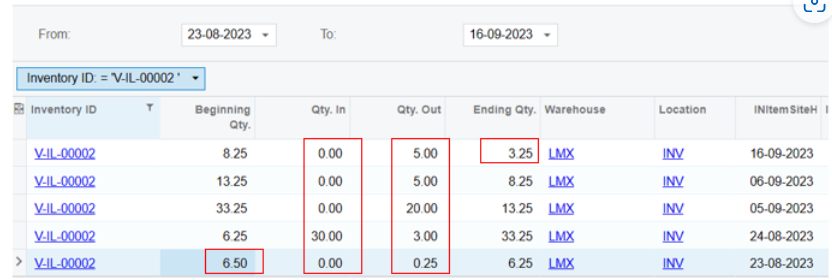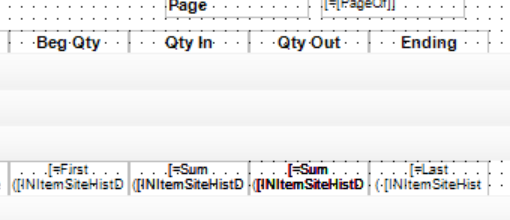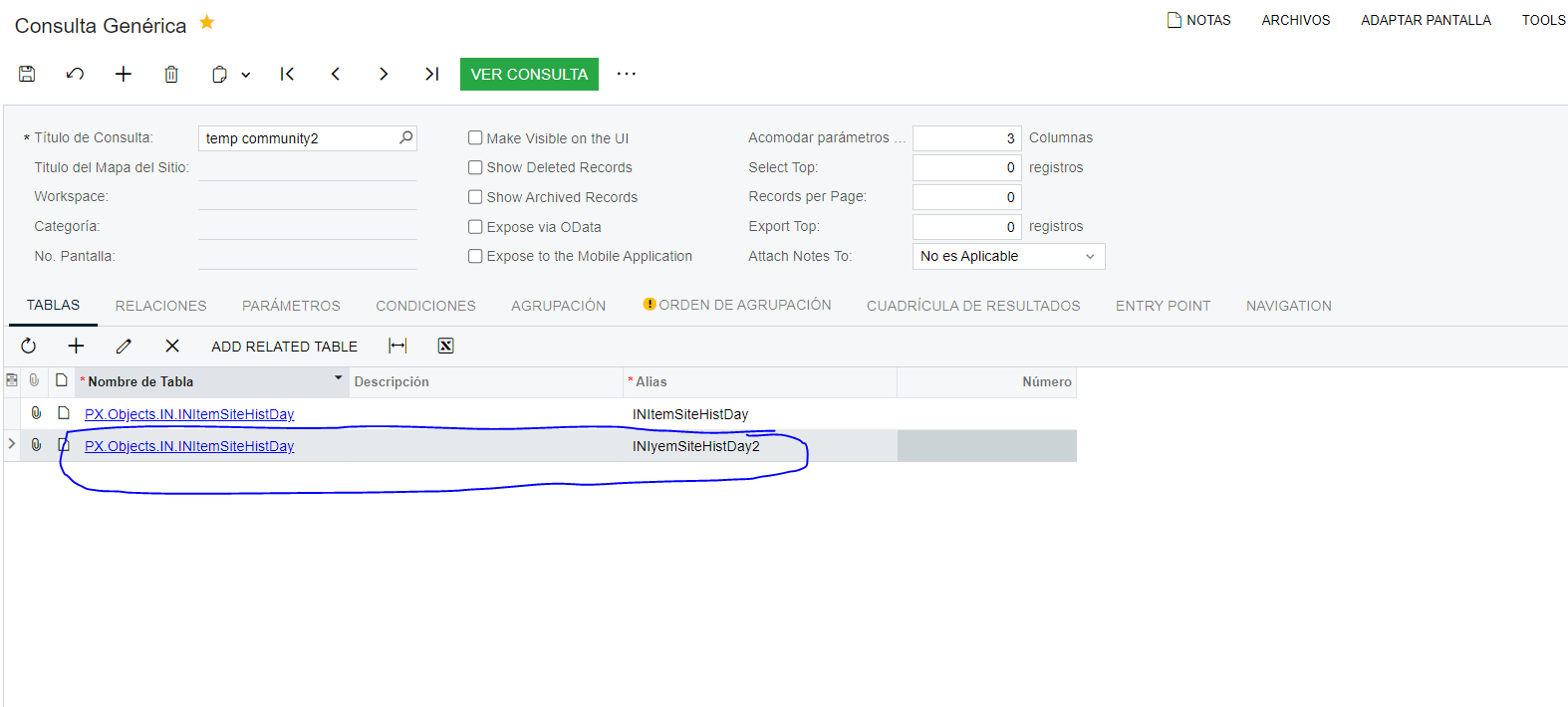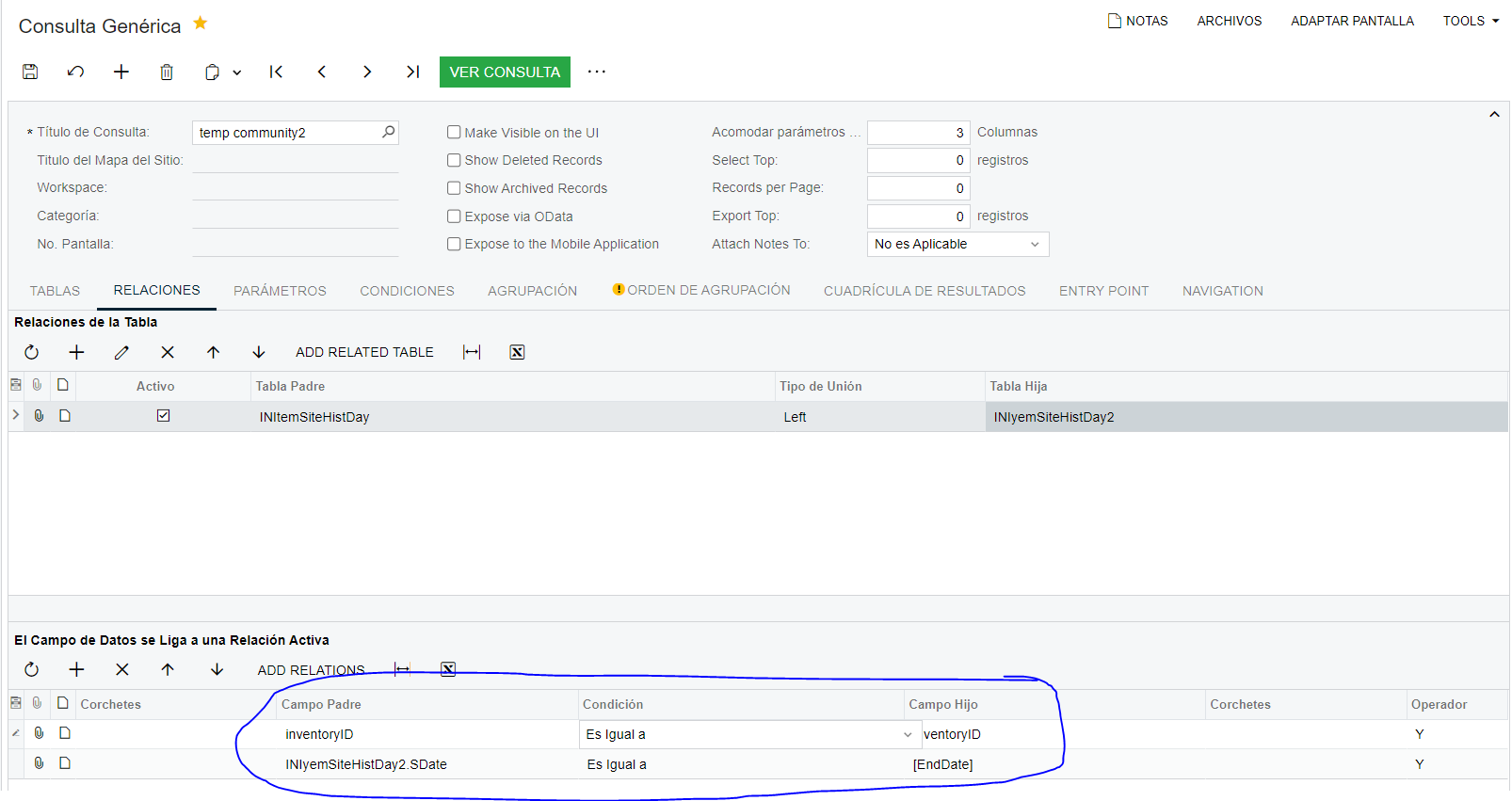Hi there,
I have created a GI to know the qty beg, qty in/out and ending qty during a date range. I only use one table INItemSiteHistDay

- Before I group by InventoryID and SiteID:
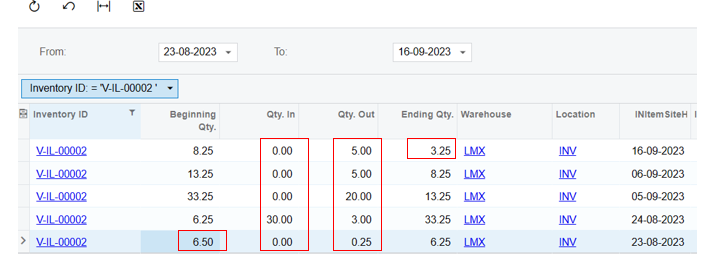
I expect to only show one line as below, but when I group by inventory ID and siteID, then I select the max Date, but Qty Beg and Ending are sum up, the Qty In or Out is correct. I do not know how to take two values from 2 rows: qty beginning of date from and ending qty of date to.
- After grouping

My parameter:

If you have any idea, pls advise me how to achieve it.
Thanks, in advanced.
Best answer by bryanb39
View original




